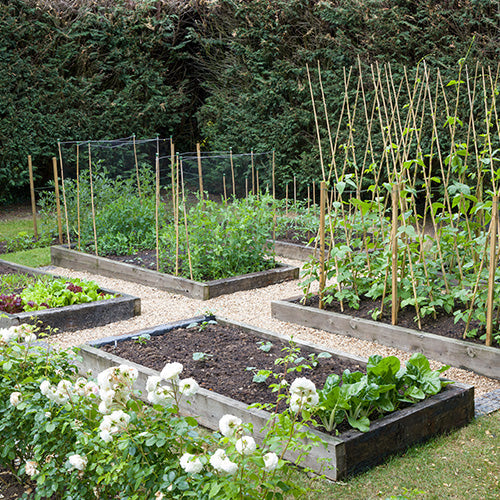Planting
Plant the bushes 1.5m (5ft) apart for Blueberries, 30cm (1ft) apart for Cranberries and 45cm (18in) for Lingonberries. Refill the holes with the soil/peat mix and setting each plant with the top of the root-ball at about or slightly below soil level.
These berries will also benefit from annual renewal of the mulch of partly rotted sawdust, bark or moss peat. Do this every spring while the soil is still moist from winter rain. Each year in March (blueberries) or April (cranberries and lingonberries) apply a lime-free fertiliser at the manufacturers recommended rates. In the case of blueberries an additional 17g m2 (½ oz yd2) of sulphate of ammonia can be applied if growth is not very strong and new shoots grow to less than 30cm (12in) in a full season.
In the many areas where the soil is insufficiently acid to raise these fruits they are easily grown in containers. Select containers of a size that will allow plenty of room for growth and pot plants individually using an ericaceous compost. In subsequent years re-pot in late autumn or early spring as necessary. They must never be allowed to run short of water (rainwater preferably) and it is better to err on the side of over-watering rather than to risk them drying out.
When plants are in full growth, feed regularly with an ericaceous liquid feed at manufacturers recommended rates. Blueberries and lingonberries make particularly good container plants with attractive flowers as well as fruits. Blueberries also exhibit good autumn colour while cranberries and lingonberries have the advantage of being evergreen.
Blueberries are ready for picking when they are blue-black, soft and detach easily from their stalks. As they don't all ripen together it is usual to go over the bushes several times at about 4-5 day intervals. Ripe cranberries are a dark red colour and, being rather tedious to pick, it is probably best to wait until all are ripe before harvesting.
Pruning
Blueberries - In the first two winters remove any diseased or damaged shoots and any weak shoots lying on the ground. In subsequent years remove some of the oldest branches (about 1 in 5 of the total) cutting them back to the ground or to a vigorous new shoot close to the ground.
Cranberries - At first the only pruning needed is the removal of shoots damaged during picking. This is done after completion of the harvest. When plants have become fully established and filled in the space between them, an additional careful thinning of both the prostrate, creeping and upright, fruiting shoots should be done in March to prevent overcrowding.
Lingonberries - These spread slowly by rhizomes to form a ground-covering mat of stems and need little pruning apart from removal of any dead or damaged shoots after fruiting.











